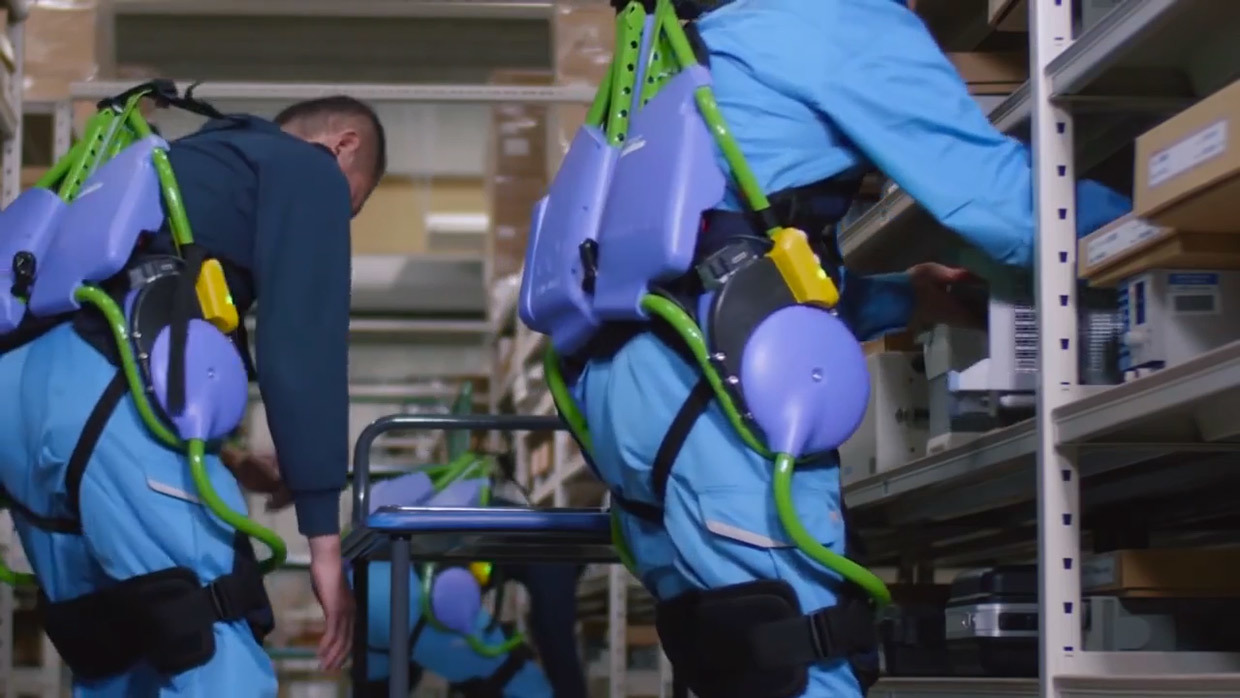At Panasonic factories, movers work in exoskeletons like Borghi

Recently, many developers show new models of exoskeletons to help older people and manual workers. But these are experiments that are rarely used in business. Panasonic is one of the first to decide that the time has come. The Panasonic plant in Japan now resembles the Borg ship from the Star Trek series. Uniform movers are dressed in mechanical exoskeletons and carry heavy boxes easily.
The science fiction picture of the future is shown in a new video published by a Japanese firm.
The Panasonic factory uses exoskeletons model Assist Suit AWN-03. The battery lasts for eight hours, that is, for one work shift. The exoskeleton weighs only 6 kg and is easily worn on the body by the loader without assistance. When lifting weights, it reduces the load on the back by 15 kg.
Mechanically improved people are currently cheaper and more efficient than robots. At the factory, people and robots work in parallel, helping each other.
It is possible that many manual workers will be equipped with such mechanisms in the future. By the way, in Borg, the exoskeleton also served as armor and was not put on, but directly connected to the carrier's body, for more effective management and communication with the collective consciousness (in our case, this is the manager).

Seventh of Nine after assimilation by the Borg
By the way, Panasonic developed other exoskeletons. For example, the PLN-01 Ninja model covers not only the arms and shoulders, but also the legs. The mechanism helps to walk and run, climb the mountains, etc. Such devices are useful for working outdoors: for example, lumberjacks or couriers.

In the end, the development is the most powerful exoskeleton Power Loader, which is quite capable of replacing the loader. It is planned to be used to disassemble debris in rescue operations and at construction sites.


